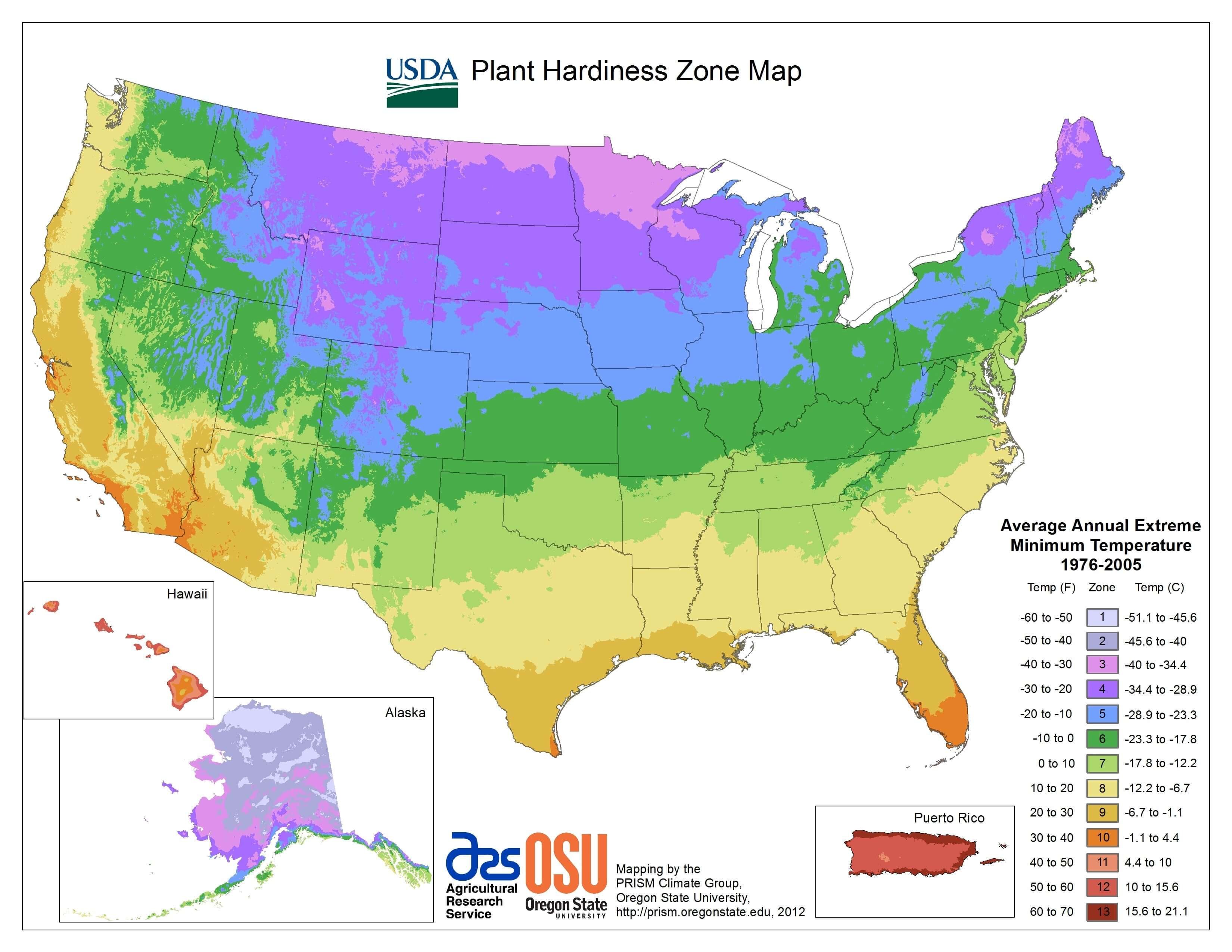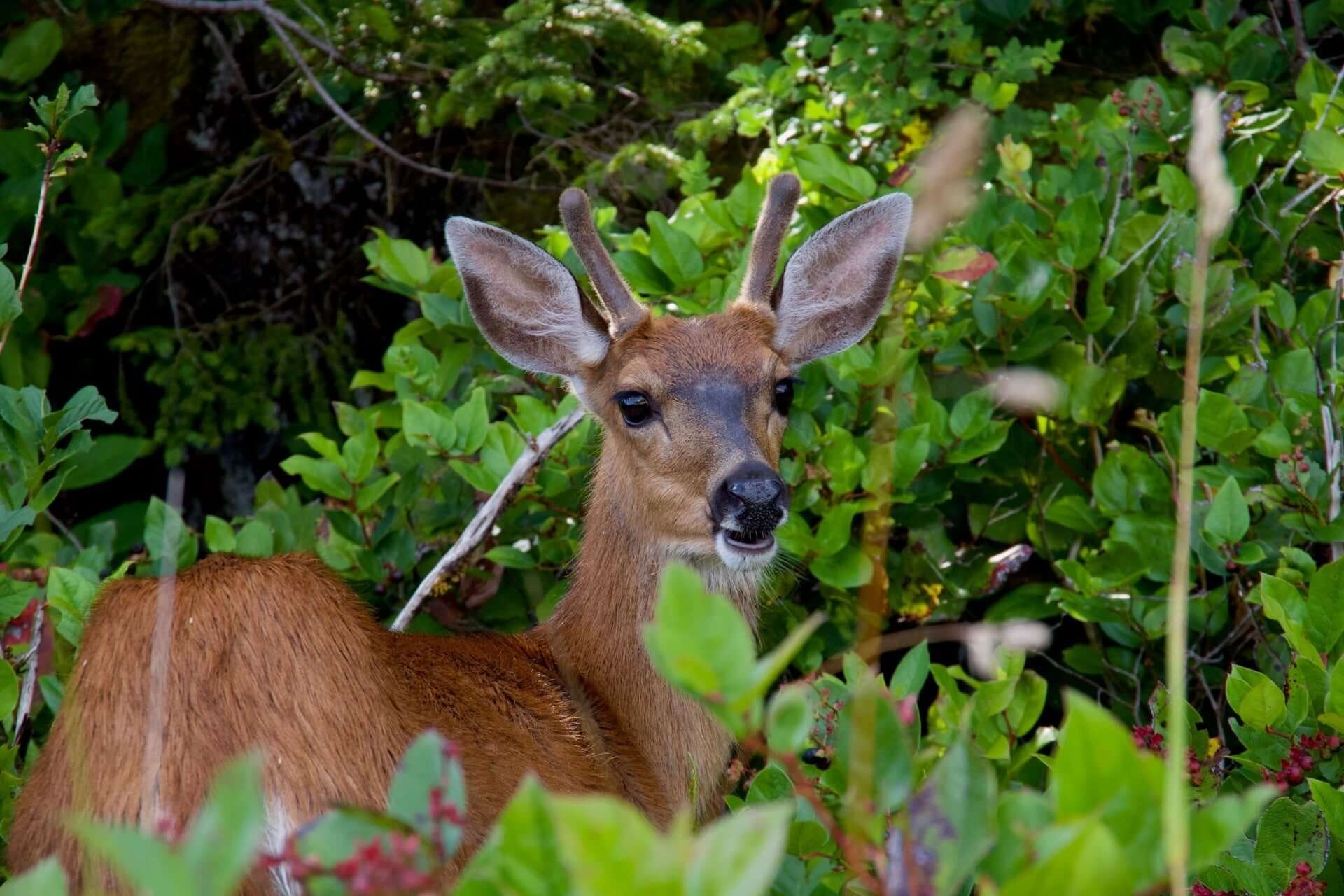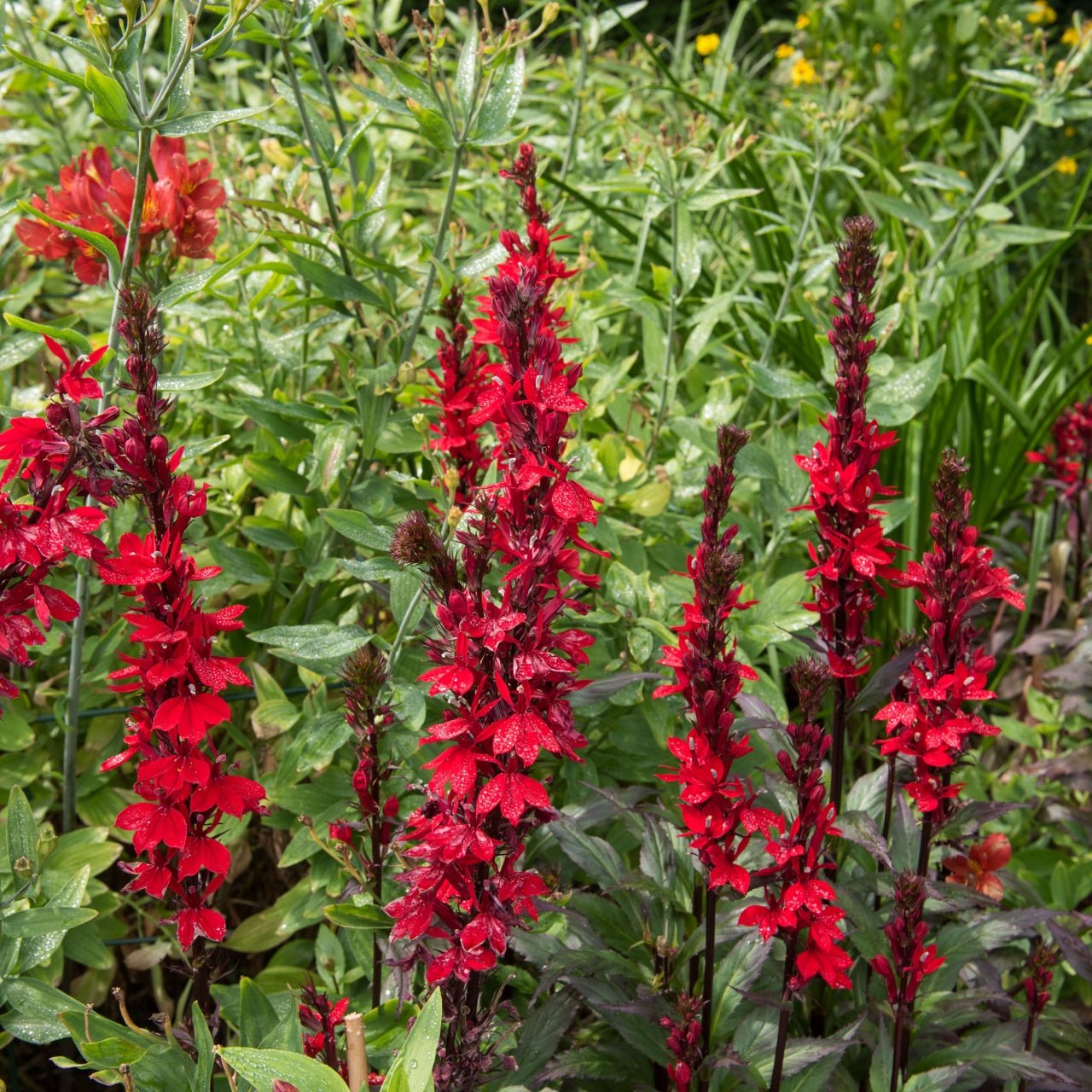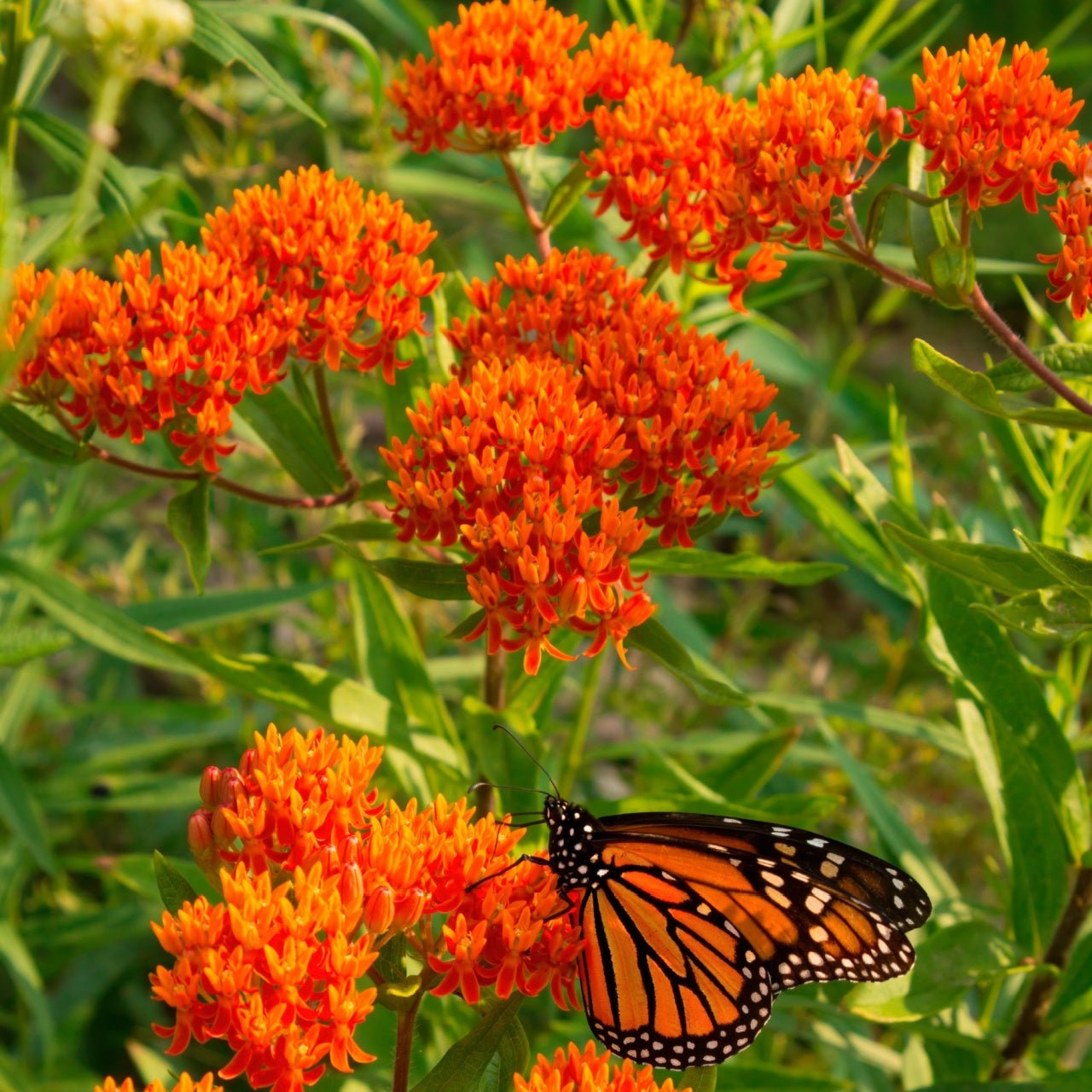In the early 20th century, deer were almost wiped out by hunting. These days, they seem to be everywhere. Deer can cause tons of damage to a landscape. Here are some tips to keep your landscape deer resistant. Remember, nothing is deer proof.
What Is Deer Resistant Landscaping
Deer resistant gardening uses a variety of techniques to minimize the damage deer do to your landscape. No plant or deterrent will stop deer from grazing on your landscape altogether. If food is scarce, deer will do anything for a meal. Still, you can make deer feel unwanted if they do show up.
Fencing
Fencing is the best way to keep deer off your property and away from your plants. Unfortunately, it is expensive, and some locations will not allow fencing.
Chain Link or Welded Wire Fences
Chain link or welded wire fences can be effective at stopping deer. They must be at least eight feet tall to prevent deer from jumping over them. That gets expensive. Alternatively, you can use a six-foot fence to enclose an area smaller than 10 by 10 feet. The deer won’t think they have room to land safely, so they won’t jump in. Make sure any fences are far enough from the plants they are protecting to keep deer tongues from snagging them.
Wood Privacy Fences
Deer rarely jump over a six-foot privacy fence since they cannot see the landing zone. This protects the plants enclosed within and keeps deer tongues from reaching inside to pull foliage outside the fence. Wood fences are expensive, so may not be practical. Some HOAs ban wood fencing in some locations, such as homes near a golf course.
Electric Fences
Electric fences delivery a shock to deer that touch them. Using the ribbon type of electric fence around your landscape with several strands (like bob wire fences, just smoother) will quickly teach deer to avoid the fence. Smear peanut butter on the ribbons before turning the fence on so the deer will lick it and get shocked. This teaches deer to avoid that area.
Repellants For Deer
Deer repellants are all over the internet. Most of them do not work or only work for a short period of time until the deer get used to them. Taste repellents like hot sauce make the food taste bad to deer. In many cases, the deer have to eat some of the foliage to learn it tastes bad.
Odor repellants repel deer by smell. Predator urine, human hair, and blood meal are examples of odor repellants. All repellants have to be spread frequently. Rain, irrigation, and time will all wash the odor or taste away. Repellants are best used with other techniques as they don’t work well by themselves.
Scare Devices
Scare devices startle the deer and make them run away. The include gunfire, sound cannons, and fireworks. Motion sensors attached to lights or sprinklers also work, at least for a short time. Deer quickly figure out the noise won’t hurt them and start to ignore it. Moving motion activated sprinklers around so they are in new places every few days can make them more effective. They have been shown to be the best scare device when used properly.
Winter Protection
When plants are dormant and under snow or ice, our landscapes become much more attractive to deer. They need more calories to stay warm and will eat practically anything. Even fences may not work. Snow drifts can allow deer to jump over an otherwise impregnatable fence and get your plants. Be vigilant and use scents and noise in addition to fences to make the deer find somewhere else to eat.
Antler Rubbing
In the early fall, male deer rub the velvet off their antlers. They can strip the hiide off immature trees while doing so. If they strip too much off, they can girdle the tree. Deer may also push the tree over while rubbing against it. If you have young trees, you can protect them by putting a circle of steel fence posts around the trunk and wrapping welded wire around the posts. Make sure the wire is about a foot to two feet away from the trunk so deer can’t reach the trunk to rub. Take the wire off the posts and remove them in the spring so it doesn’t interfere with the growth of the trunk. Once the tree gets larger and has rougher bark, the damage isn’t as severe and the tree may be okay.
Plant Selection
Some plants are favored by deer. Those should be planted within a fence or near a house, so deer hesitate to go where they are planted. Other plants are less liked by deer, so do not need as much protection as deer favorites. Some people plant deer favorites like hostas on the property line to draw deer there and away from the human favored plants. If deer are definitely there and something is going to be eaten, this can work. If deer are not as prevalent, you risk luring them to your property with decoy plants.
Managing Damage
Some plants can recover after deer damage, but some cannot. It depends on the plant and the extent of the damage.
Evergreen Plants
Evergreen trees are the most at risk, especially in the winter. If the branch still has buds on it in the spring, the plant will recover. If the buds are eaten, the branch won’t grow any further. You will probably have a gap in the branches from then on. Arborvitae and yew are most at risk, but all evergreens are vulnerable.
Deciduous Plants
Deer tend to browse the tips and stems of deciduous trees. If the damage is severe, the tree may need to be replaced. If only a few of the secondary branches are eaten, the tree will recover. Most shrubs will produce suckers so are more likely to recover from a deer attack. It may take severely damaged shrubs several years to recover.
Perennials, Annuals, and Vegetables
Herbaceous plants will continue to grow after being browsed by deer. Provided the browsing stops, the plant will recover. If the deer has eaten the flowers, the plant may not rebloom. Bulbs like tulips and plants like cardinal flowers usually won’t replace eaten flowers, but plants that bloom for a long time, like butterfly weed, will grow new flowers the same year.
Damage From Antler Rubbing
If the bark is stripped all around the tree, often referred to as being girdled, everything above that spot on your tree will die. Water and nutrients cannot reach the part of the tree above that spot. There is nothing you can do but replace the tree, so prevention is important.
Get Advice On Deer Resistant Plants
At TN Nursery, our staff can help you find deer resistant plants for your landscape. Give us a call at 931.692.7325 for advice and to order plants.
Read more

Perennials that flower in late summer or early fall are generally planted in the spring, while spring and early summer flowering perennials are generally planted in the fall. We ship bare root pere...

When shopping for plants, you might have seen the “zone” listed on the plant tag. The United States Department of Agriculture (USDA) developed a map of plant hardiness zones for the US to help peop...




